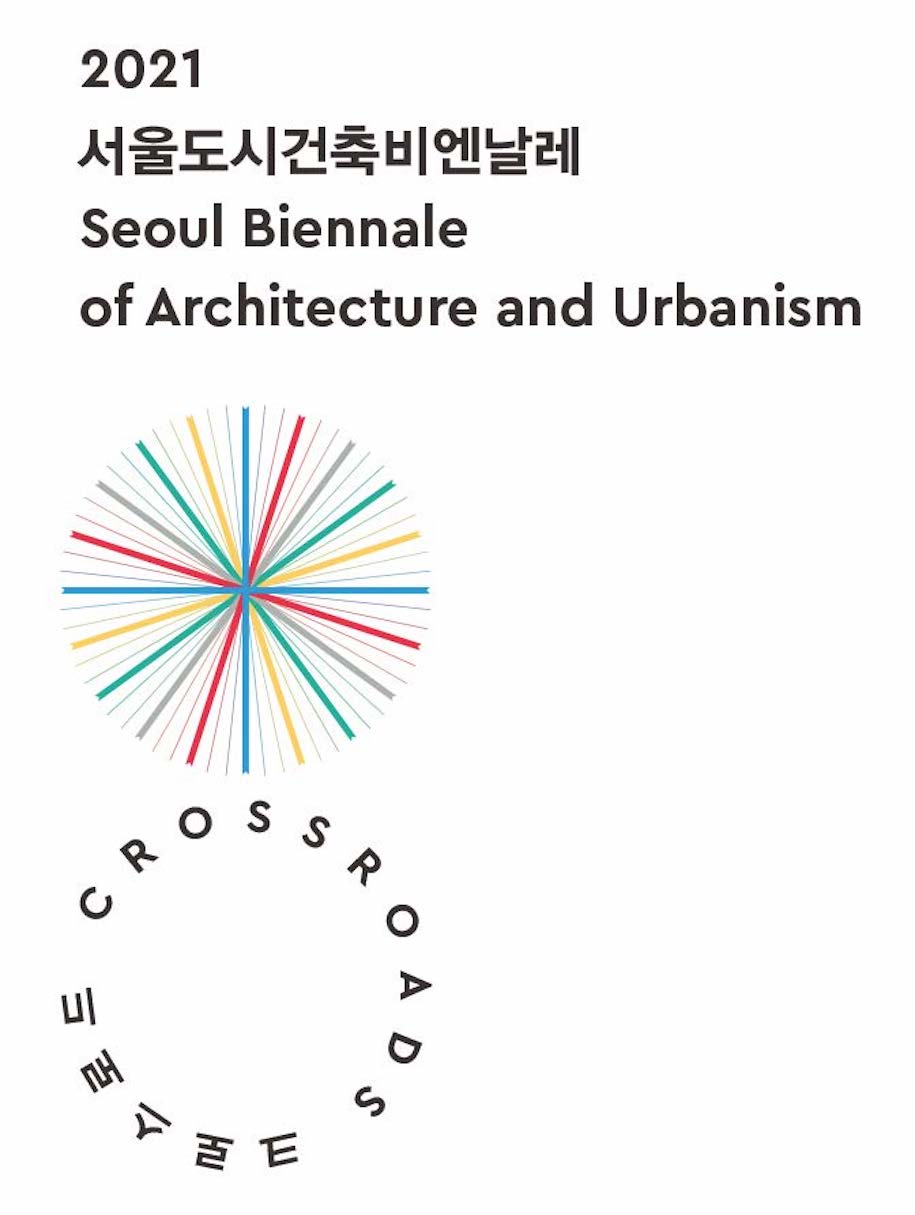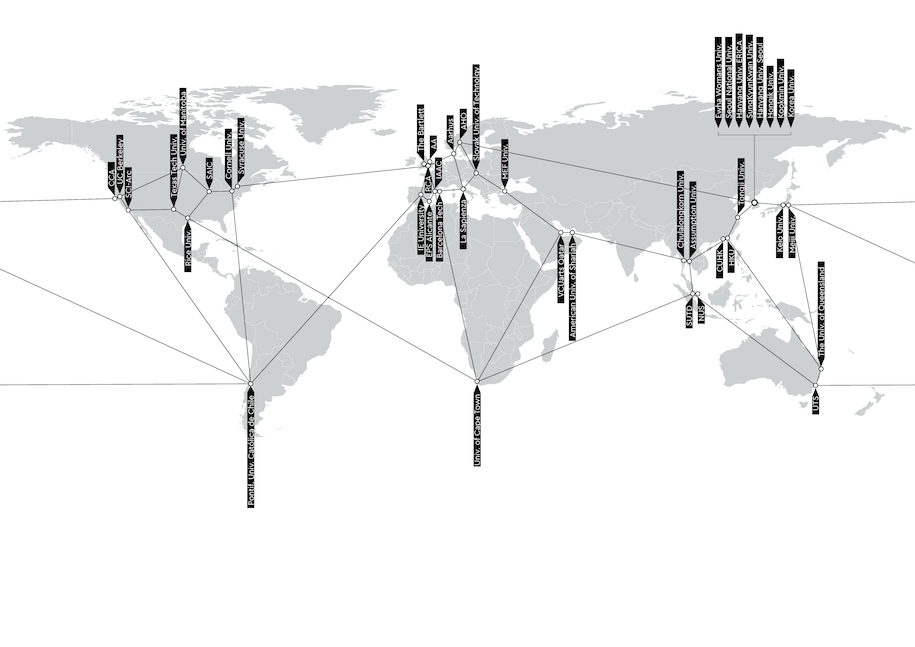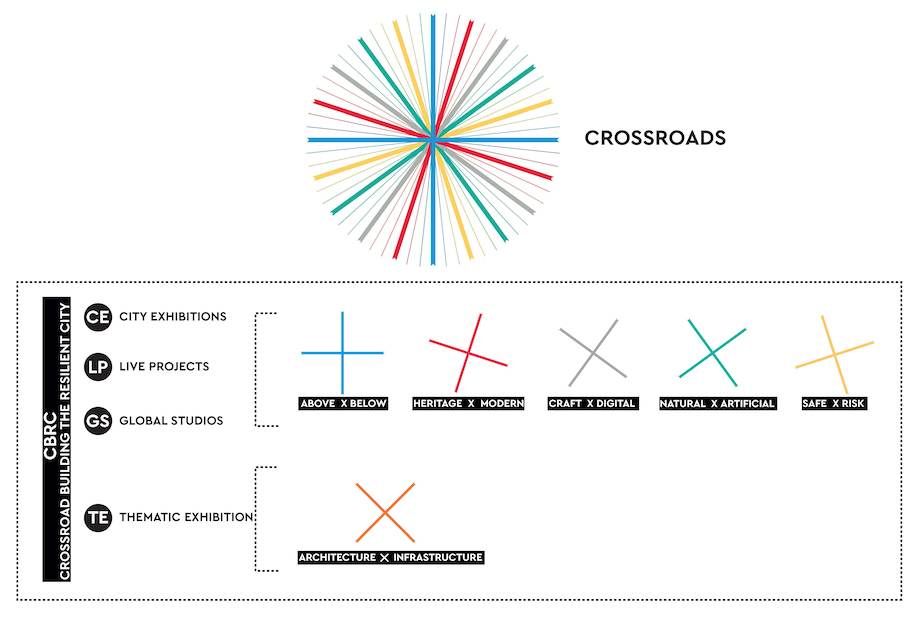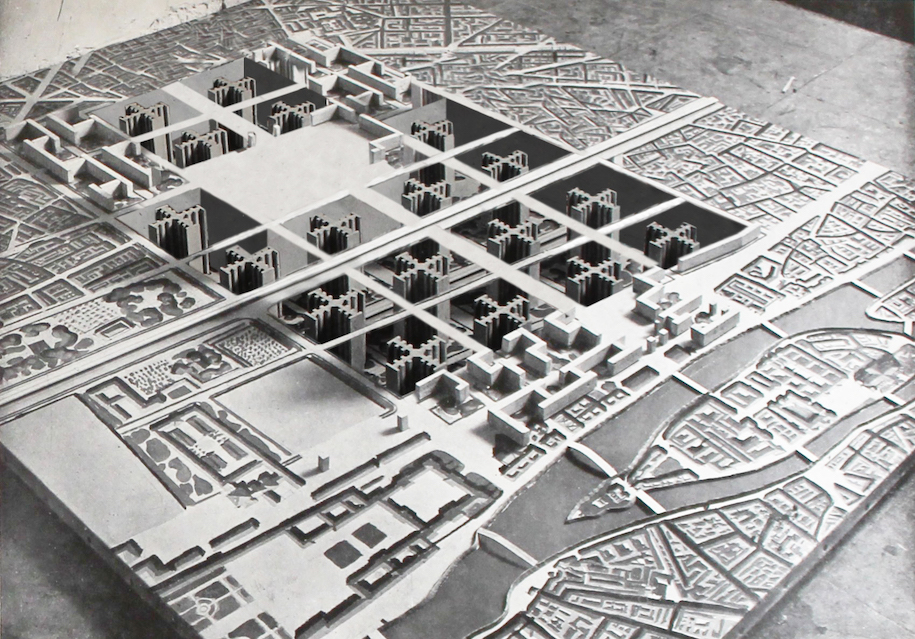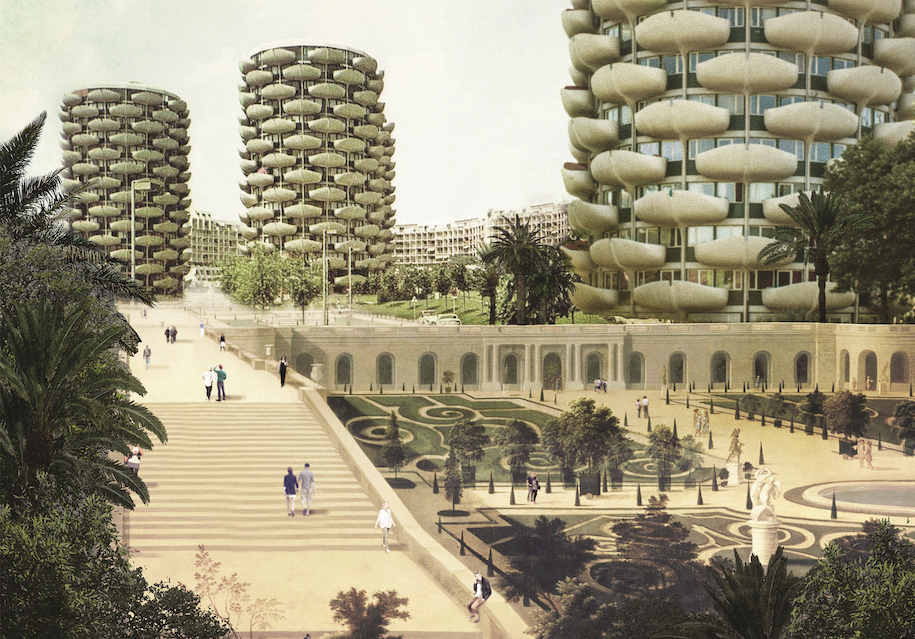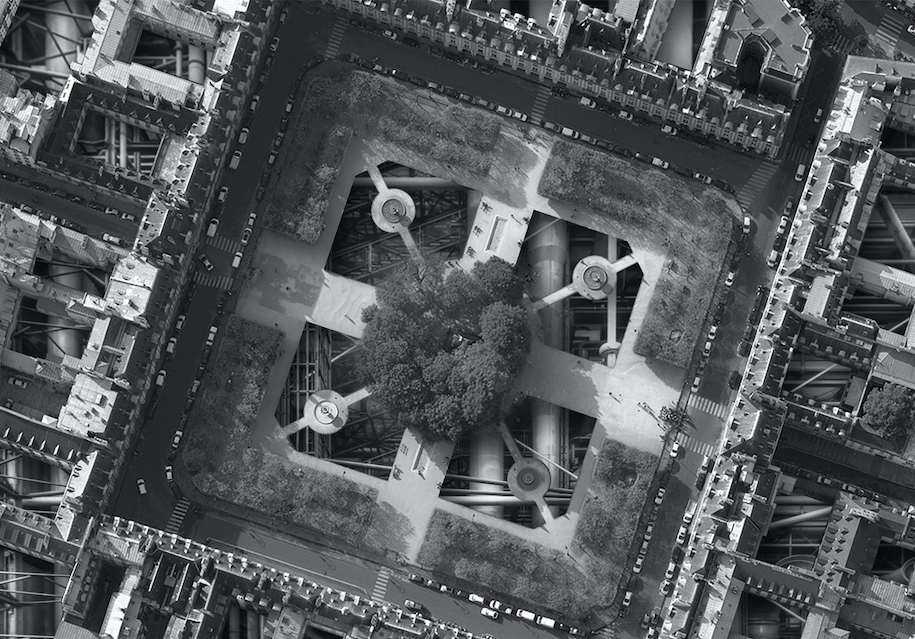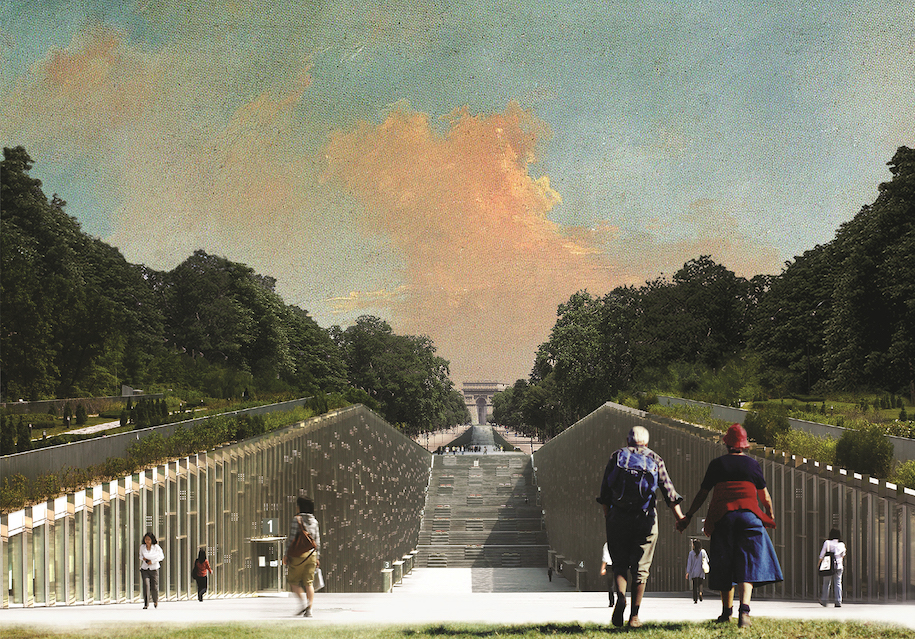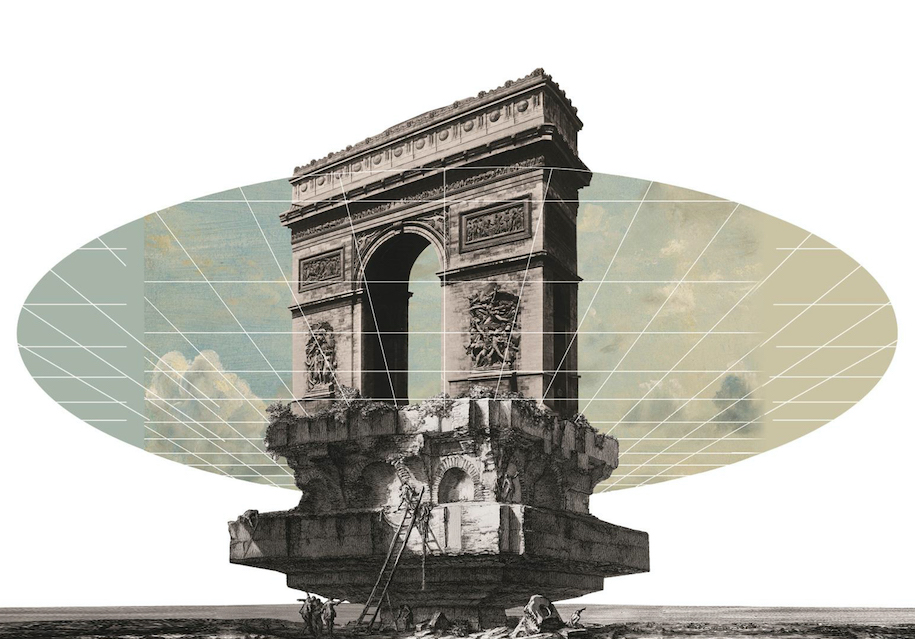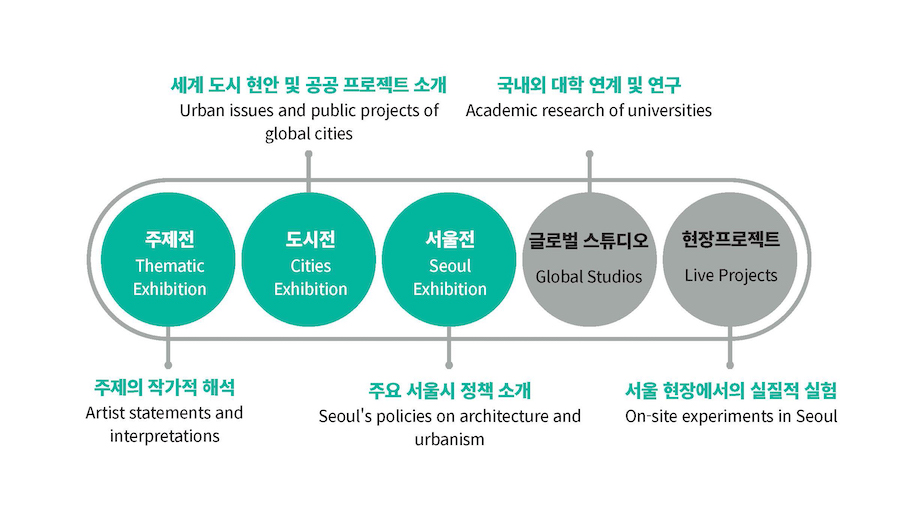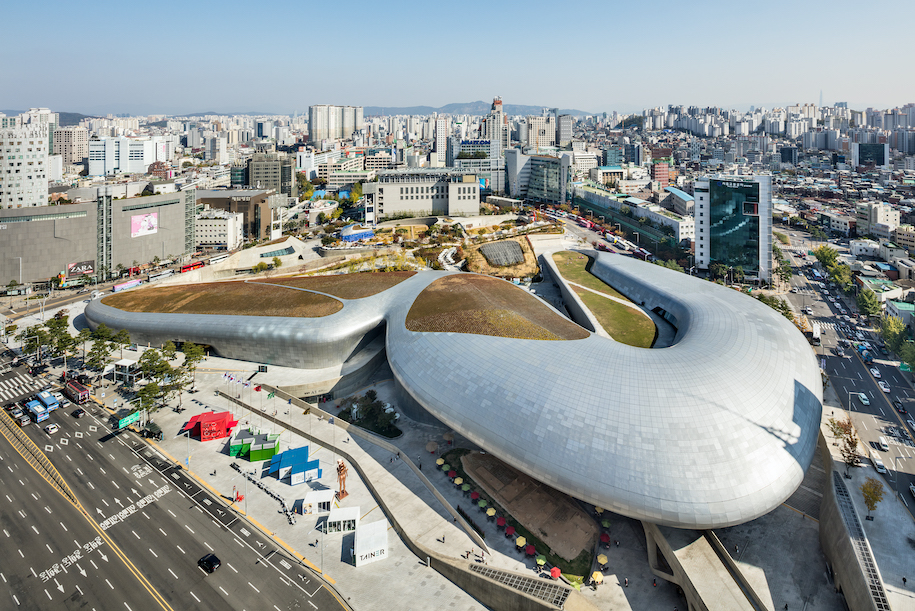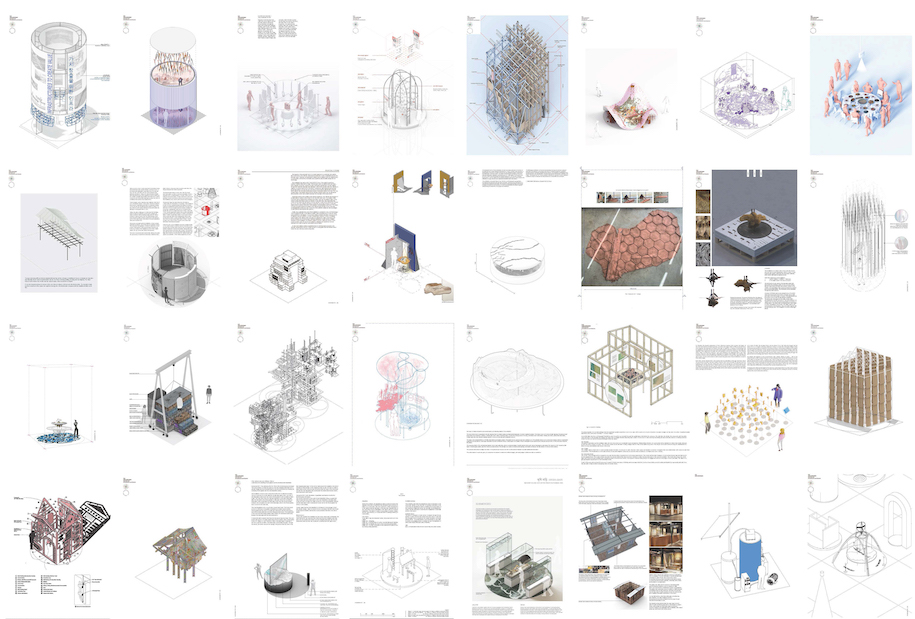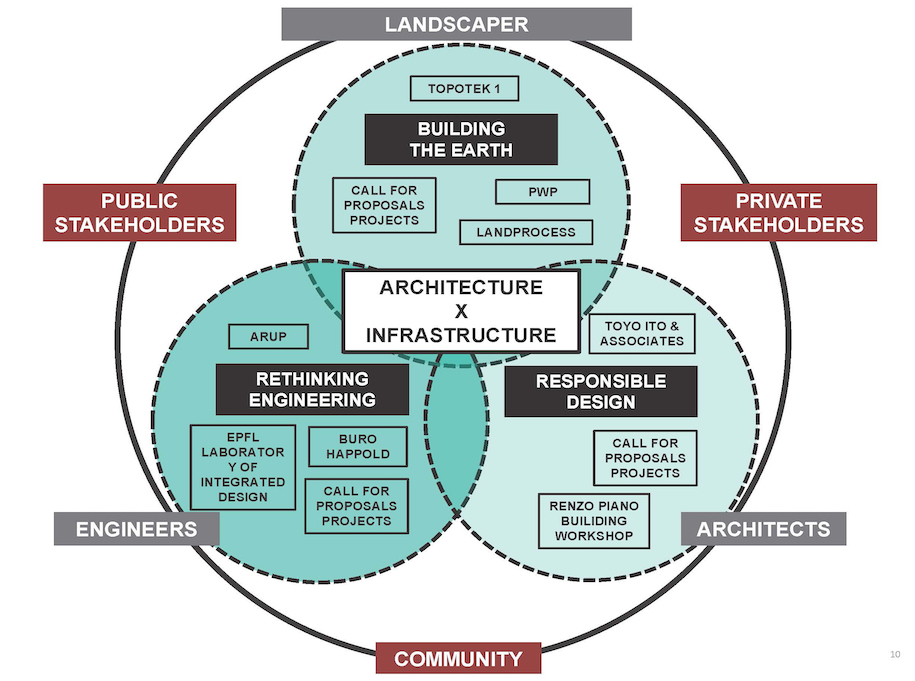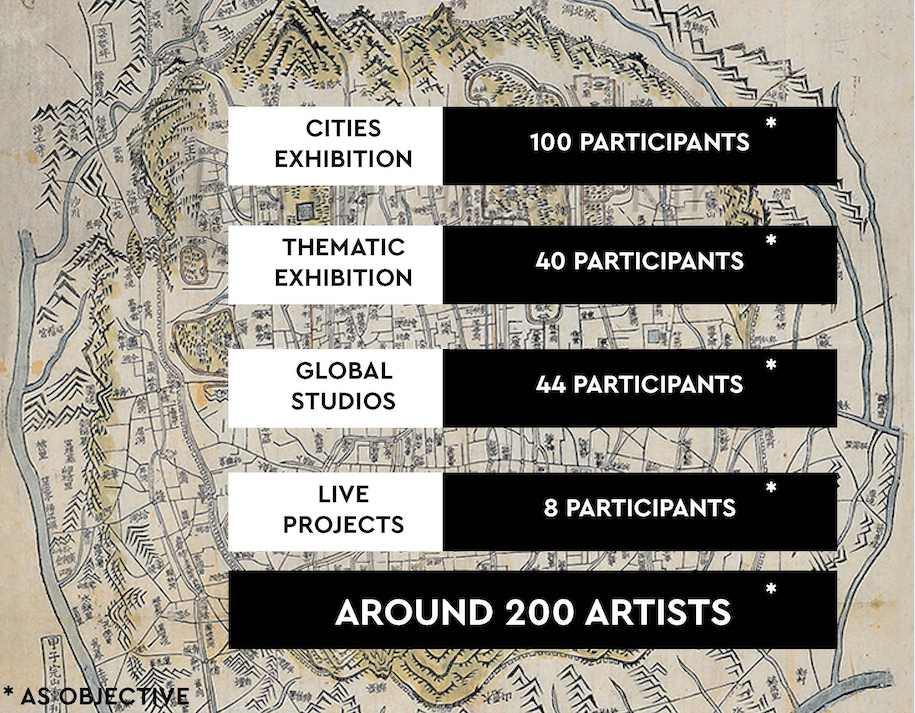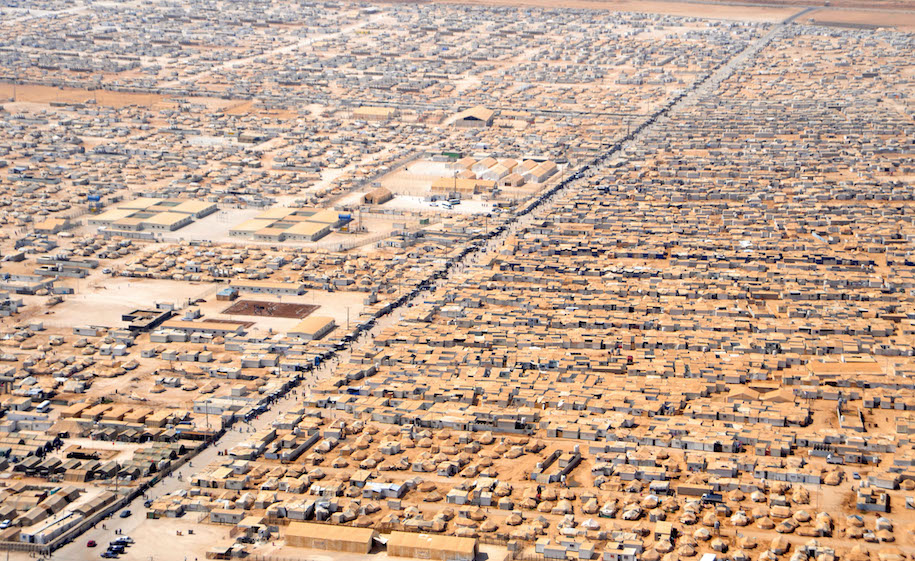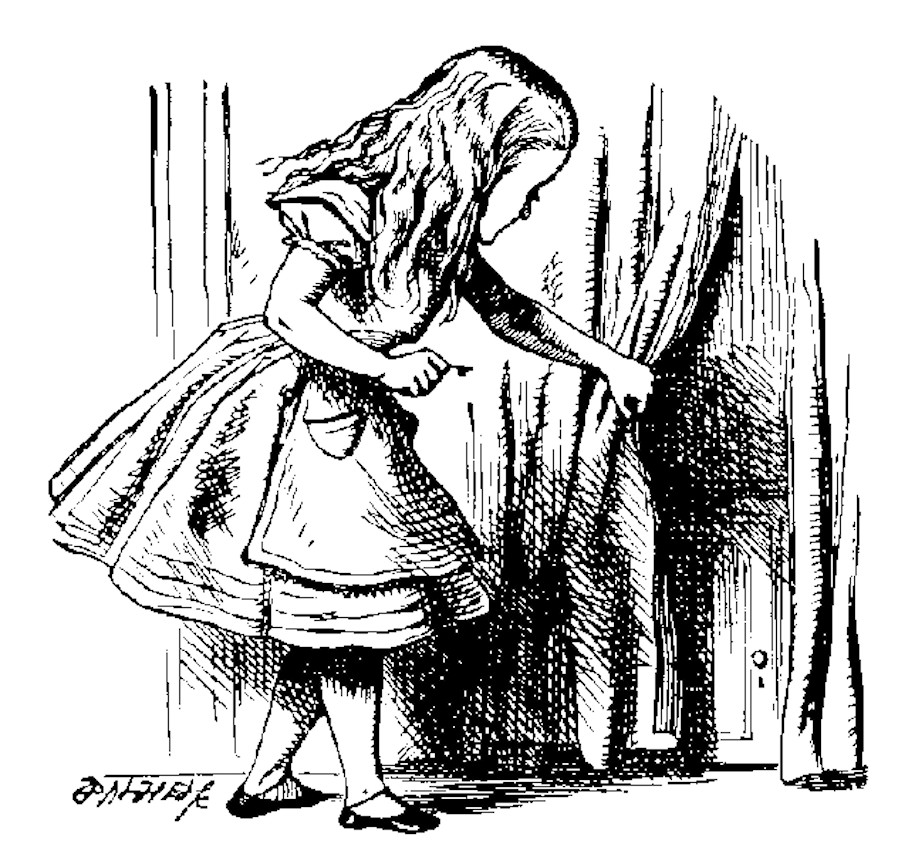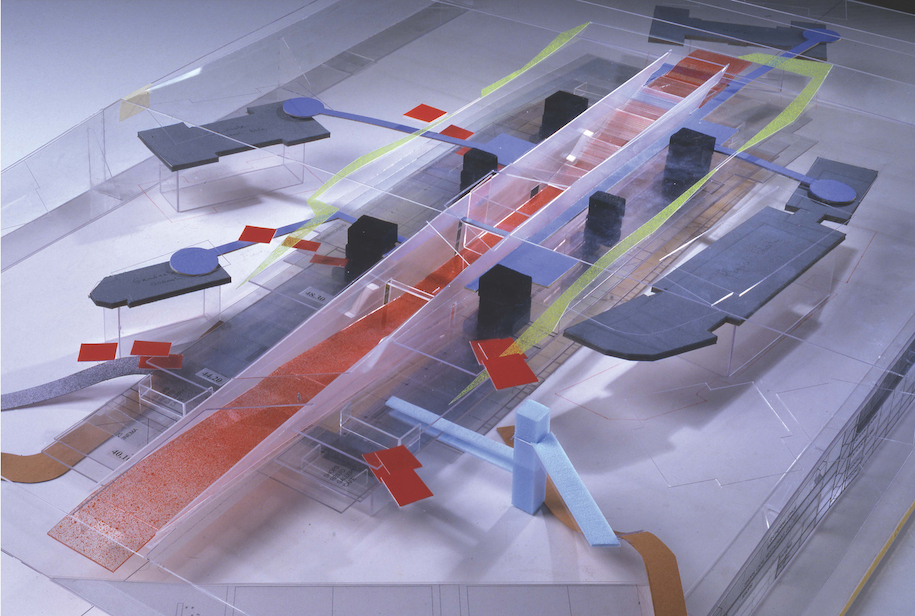The Seoul Biennale of Architecture and Urbanism will be held from September 16 to October 31, 2021. With 10 million inhabitants, Seoul is one of the most representative examples of contemporary metropolises, a particularly relevant context to frame this Biennale. Claiming a strong connection between architecture and urban planning, the Biennale offers the public a platform for exchange, discovery and promotion of projects and research that question the city.
The SBAU2021 is intended to highlight Seoul’s architectural effervescence and to become an international showcase for the world’s cities. Following the first two editions entitled “Imminent Commons” (2017) and “Collective City” (2019), the third edition entitled “CROSSROADS Building the Resilient City ” will explore the evolution of the world’s cities and metropolises. While some 50 cities were represented in 2017, then 85 in 2019, Seoul hopes to welcome in 2021 the contributions of more than a hundred cities from the five continents.
A “Pre-Biennale” event, was held online on October 29th. One year before the event, this event brought together two parallel sets of guests and speakers, one from the Paris City Hall, the other from the Seoul Hall of Urbanism & Architecture, available to watch online here.
In February 2020, Dominique Perrault was appointed General Director of the 3rd Seoul Biennale of Architecture and Urbanism.
The SBAU 2021, entitled “CROSSROADS Building the Resilient City ”, will attempt to respond to the complexity of the relationships that shape our cities and to the key time that humanity is currently facing by drafting a manifesto for a more sustainable city.
The Seoul Biennale of Architecture and Urbanism 2021 (SBAU2021) will be the first international architectural event produced in the aftermath of a pandemic that is altering and challenging our lifestyles and civilization, placing cities at the heart of complex issues. The theme, based on action and resilience, illustrates the desire to make this event a place of convergence, considering, more than ever, the city as a collective invention. The Biennial intends to bring together various perspectives and skills in order to reflect on the city as a more sustainable, resilient and comfortable place for its inhabitants.
The Bienniale will promote the theme of “crossroads”, considering cities and metropolises as spaces of superposition, complex and constructed interactions between inhabitants, buildings, infrastructures. The SBAU2021 is structured in the form of five figures, called «Crossroads», who converge in their intention to promote a more sustainable urban growth and a vision of the city as a collective invention.
These five figures, thematic entry points, will be used to approach the content of the Biennale’s exhibitions.
Crossroad 1 on urbanism: ABOVE/BELOW, will explore architectural and urban planning approaches that explore the potential interconnections between the above and below ground layers of the city: a strategy to increase city density and programmatic connections, while limiting urban sprawl.
Crossroad 2 on architecture: HERITAGE / MODERN, will explore the built environment, question the notions of construction and destruction, and explore the optimization perspectives of the existing built environment.
Crossroad 3 on design: CRAFT / DIGITAL, will consider the potential of the city as an instrument of remote production, accessible from anywhere by everyone, in contrast to traditional spaces and production methods.
Crossroad 4 on landscape: NATURAL / ARTIFICIAL, will examine how nature is today at the heart of the building process. It will highlight practices that give increasing importance to the harmony between the built environment and the presence of nature, whether preserved, transformed or built.
Crossroad 5 on the city: SAFE / RISK, will question the capacity of architecture and urban planning to adapt, transform or react to the multiple risks of the contemporary world.
To these five figures, a last one called ARCHITECTURE/ INFRASTRUCTURE will introduce the content of the “Thematic” exhibition. The exhibition will question the perceived separation between Architecture and Infrastructure: buildings usually associated with the field of architecture and the works or installations covered by the term “infrastructure”. It will argue for a fusion between architecture and infrastructure as a tool and way to create a more resilient city.
The SBAU2021 will have five sections, corresponding to five exhibitions, to which will be associated a series of meetings and events. The “Thematic” and “Cities” exhibition will be located in the Dongdaemun Design Plaza (DDP), an emblematic building in the city of Seoul, built by Zaha Hadid Architects. These two sections will form the main exhibition of the Biennale.
A selection of guest cities will also present innovative projects in the Seoul Hall of Urbanism & Architecture (SHUA). The “Global studios” exhibition will offer a space for university research. The works will be presented in the form of temporary installations in Seoul public spaces, selected through a call for projects addressed to universities around the world.
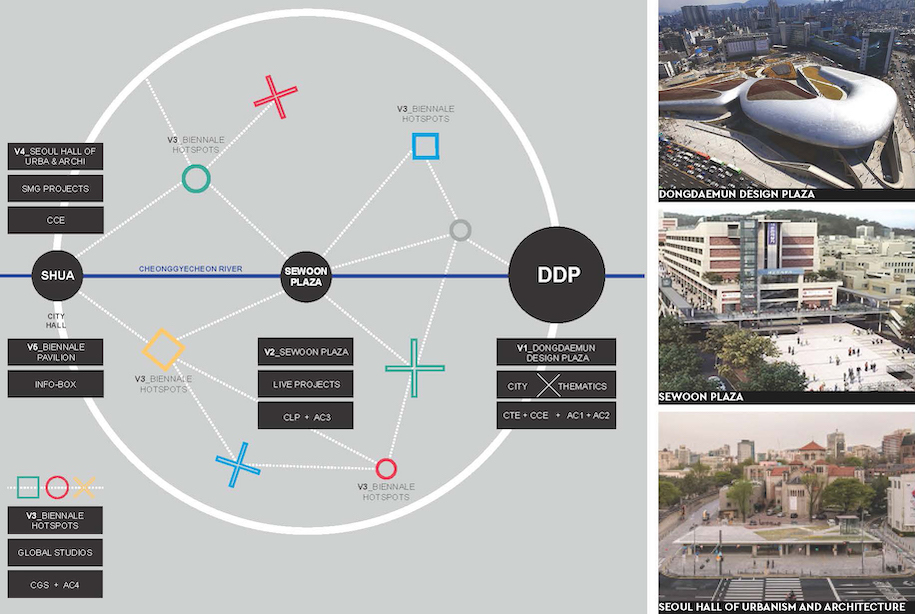
In order to reflect the widest geographical variety and the young creation, the Seoul Biennale launched an international call for proposals to identify the works that will be presented in the Biennale’s main exhibition.
This call for proposals was entirely online from May 29 to July 31, 2020 through the official website of SBAU2021. Out of 1433 registrations, 414 applications were submitted. The largest number of candatures was registered in Asia (185 nominations), followed by Europe (131 nominations). These results certainly reflect the popularity of the Seoul Biennale in Asia, but also the way its General Director has helped to increase the event’s visibility in Europe.
After a first round of the jury, 117 proposals were shortlisted. A second jury will refine this selection in order to finalize the list of selected participants at the end of 2020. In addition to this call for projects, a direct invitation selection process is also in progress.
The finalized list of artists selected to participate in SBAU2021 will be announced during the first semester of 2021.
THEMATIC EXHIBITION: ARCHITECTURE / INFRASTRUCTURE
Curator – Dominique Perrault
Together with the exhibition “Cities”, the “Thematic” exhibition will form the main exhibition of the SBAU2021. The exhibition will question the apparent division between the constructions usually associated with the field of architecture and the works or installations covered by the term “infrastructure”. The purpose of the SBAU2021 Thematic Exhibition is thus to question this separation and to advocate in favor of a merger between architecture and infrastructure as a way to create a more resilient city.
“CITIES” EXHIBITION: HUMANITY AT A CROSSROAD
Curator – Choon Choi
The “Cities” exhibition will form a collection of of projects and research developed in a hundred cities around the world, including Brisbane, Beijing, Brussels, Medellin or Rome.
EXHIBITION “GLOBAL STUDIOS” : REFUGEES
Curator – Marc Brossa
The Global Studios exhibition contributes to the 2021 SBAU by exploring the topic of ‘refuge’. Students from schools of architecture around the globe have been asked to respond to the crucial moment humanity is facing by developing critically the notion of refuge as a space of safety and resilience. By actively engaging a wide range of academic institutions, this section of the Biennale will show society that the upcoming generation of architects and designers is capable and continues to respond efficiently to extreme situations, in connection to the Biennale’s five “Crossroads”. The resulting proposals will be displayed in temporary shelters called ‘refuges’, designed by the students themselves as prototypes of their design proposals and located in a constellation of ‘hotspots’ scattered throughout the city.
“LIVE PROJECTS” EXHIBITION: SUSPICIOUS FOOTPRINTS
Curator – FHHH Friends
Kids love to walk around the city holding a stick. Stepping every manhole, knocking on walls repeatedly, and leaving marks only they understand. Kids draw their own maps in their mind and remember the city in their own unique way. Kids always leave suspicious footprints. Every part of the city is involved in many juxtaposing keywords such as Development and conservation, Production and consumption, Tradition and trend. And every parts of the city are easily defined by the dualities of these keywords. Although the keywords of the city can help us in understanding the city, it can also flatten the way we see and experience the city. The suspicious footprints is a new way of seeing the city that is yet to be defined.
SEOUL EXHIBITION
Curator – BARE
Looping City, initially presented at the Seoul Biennale of Architecture and Urbanism 2017, calls for a new layer of infrastructure that will strengthen the self-sustainability of a small-scale manufacturing district composed of a network of various fields such as production, logistics, and distribution. Through the proposal, it helps us imagine the possibilities of a new network that connects between the existing and new industries, enabling newcomers as part of the existing communities. TUBO is part of the proposed infrastructure system in the Looping City project, which investigates a new framework that addresses the issues and recycling networks of the manufacturing industry in the Sewoon Sangga and Euljiro area. TUBO 2020 collects and sorts recyclable materials – paper cups, plastic cups, and metal cans that are found in the Sewoon pedestrian walkways. Once the sorting is complete, the pictures taken with the visitors are uploaded onto the web.
READ ALSO: Urban Suites | by Studio Improvise, Studio Ice-Cream Interior Design, Ino Kouladourou
